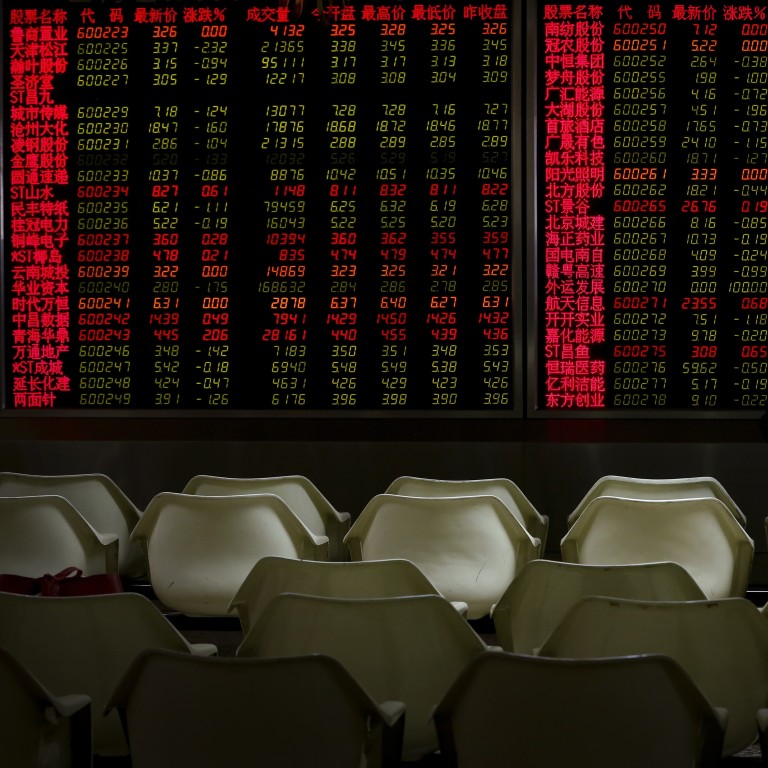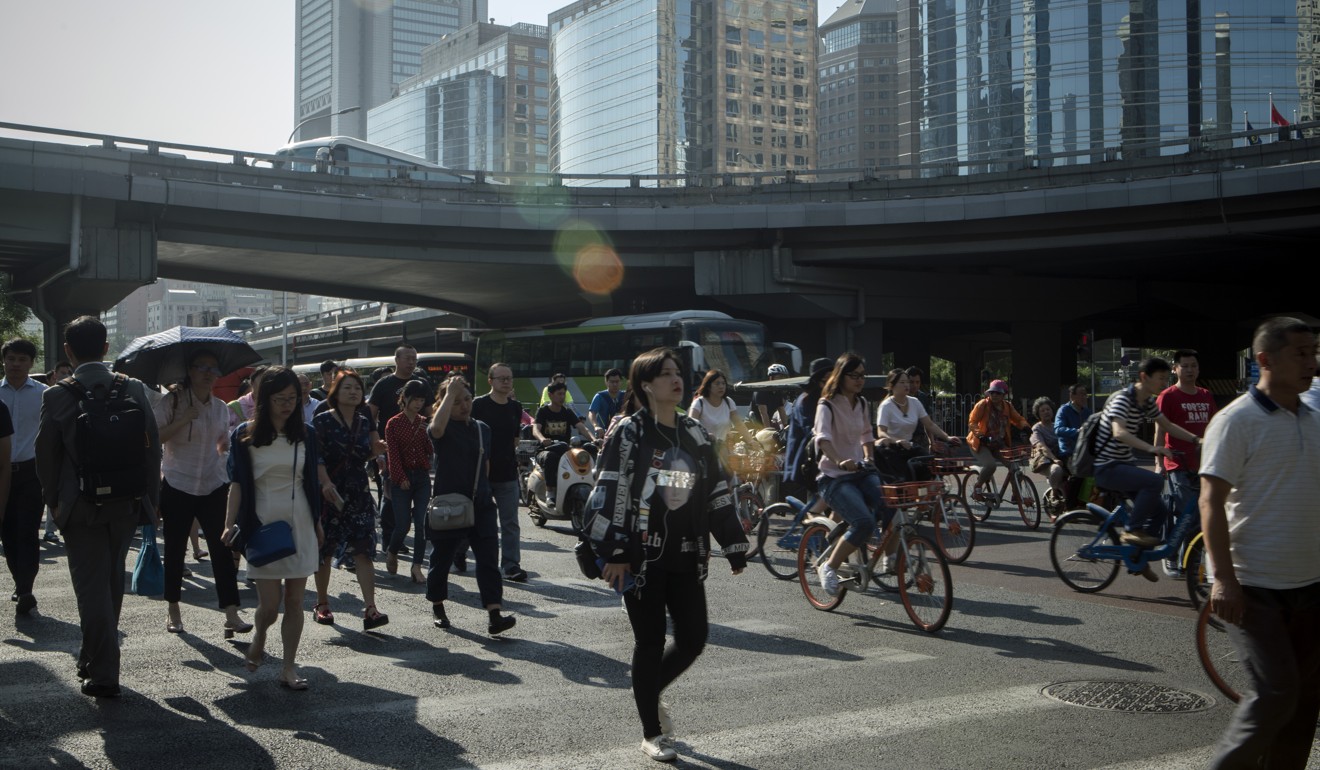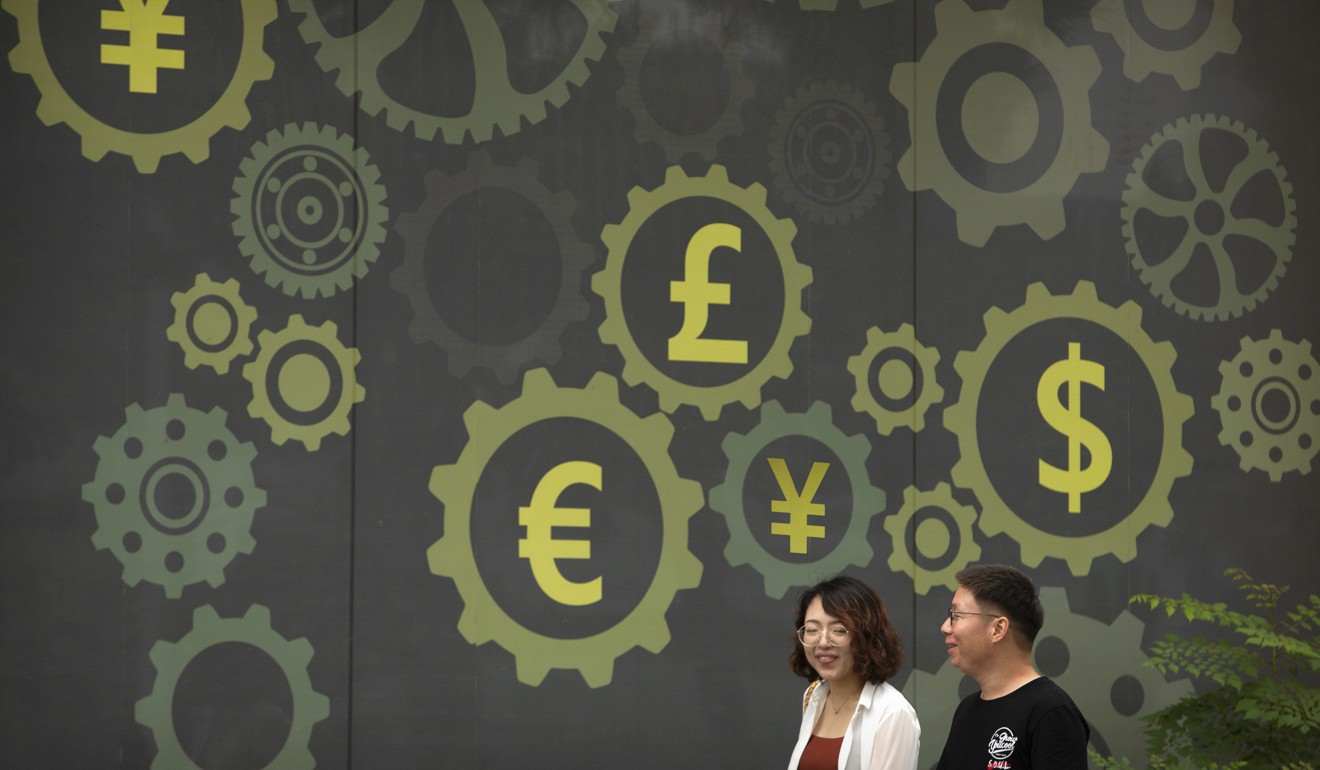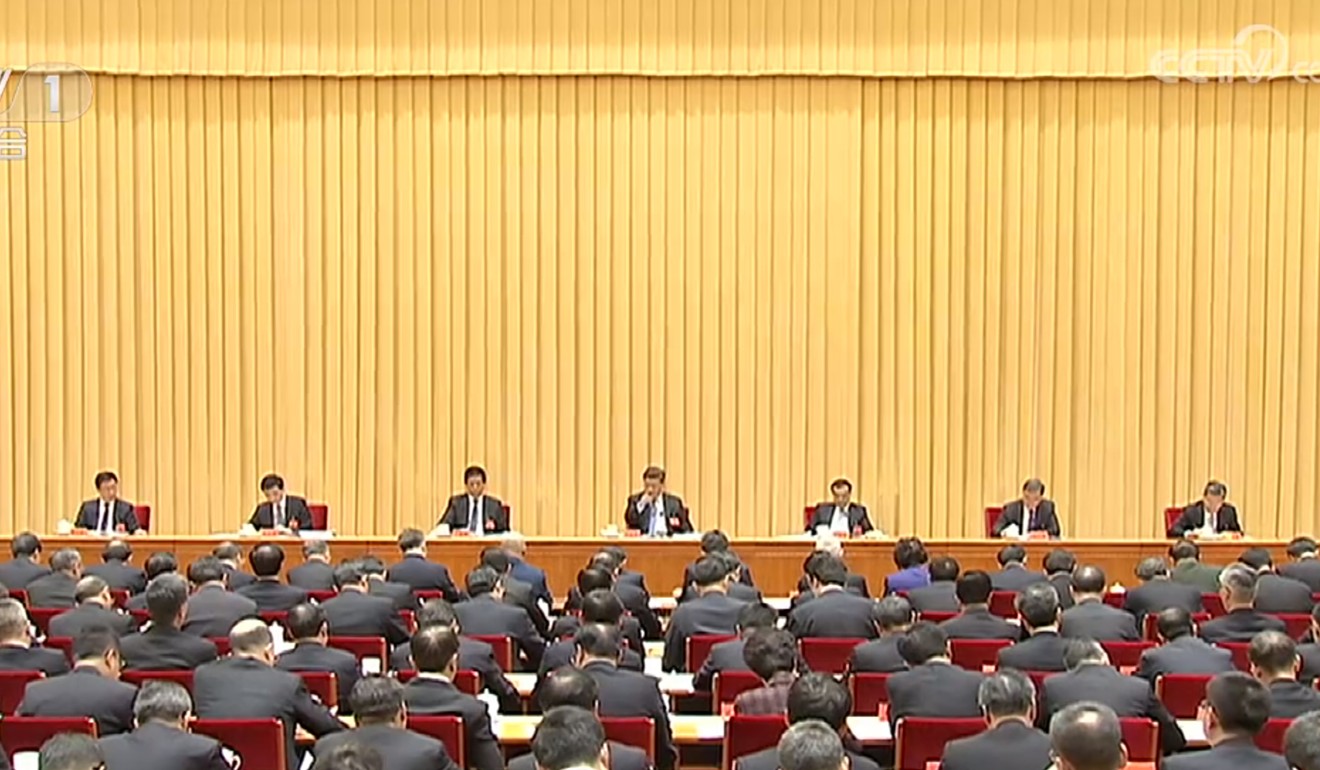
China running out of options to bolster confidence in slowing economy, analysts said
- Beijing’s efforts to stabilise growth through modest stimulus have been only partially successful after being weakened by the trade war with the United States
- Analysts urge economic reforms and opening up to bolster confidence and growth
There is growing concern that China lacks the options to stop the rapid decline in business and consumer confidence in its economic outlook, which could create a self-reinforcing cycle of lower investment and spending that would accelerate the slowing of the country’s growth rate, analysts said.
The problem is that the already high level of debt in the economy – in government, businesses and consumers – is hamstringing Beijing from enacting an aggressive economic stimulus programme for fear of making the problem much worse.
Significant economic reforms and a further opening of the domestic economy may be the only way to shore up confidence and draw a line under economic growth, analysts said.
Beijing’s effort to stabilise growth through modest stimulus have been only partially successful, and some analysts are worried that the government may be running out of time to bolster growth before the lack of confidence becomes entrenched.
China has so far refused to engage in the massive stimulus it enacted after the 2008 global financial crisis, seemingly banking on an early trade deal with the United States that ends, or at least de-escalates, the trade war.

While China’s growth rate is likely to hit the government’s 6.5 per cent target for 2018, analysts expect the economy to slow further in 2019, perhaps significantly so, due to the effects of the trade war.
China’s lowest first quarter growth rate was 6.4 per cent in 2009, meaning a drop below 6 per cent would represent a record low since the National Bureau of Statistics started publishing quarterly figures in 1992.
Growth would be hit further if Beijing is not able to reach a deal with Washington, which has threatened to raise the tariff rate from 10 per cent to 25 per cent on US$200 billion of Chinese goods if there is no deal by March 1 following the truce agreed on December 1.
The rapid decline in confidence is illustrated by a survey of chief financial officers operating in China released by consultancy firm Deloitte on December 19.
A total of 82 per cent of the 108 respondents said they are less optimistic about economic prospects than they were six months ago.
Of those surveyed, 56 per cent said their firm had already been hit by trade tariffs and only 38 per cent expected to meet their revenue targets in 2018.
“With no end in sight for tariffs, the Chinese stock markets struggling, and the prospect of pressure from government policies, it looks like [chief financial officers] are right to be negative,” said William Chou, national managing partner of Deloitte’s China chief financial officers programme.
Xia Le, chief economist for Asia at BBVA Research, believes business confidence is at its weakest level since 2008 following the global financial crisis, but this time, Beijing does not have as many options to shore up confidence so it is likely to focus on bigger tax cuts, he said.
Despite Beijing’s effort to monitor and cut down on excess debt and risky lending, hidden debt within regional and local governments is still a major concern.
In its financial stability report published in November, the People’s Bank of China said that total debt at an unidentified province was 80 per cent higher than the debt level reported in its budget.
Moody’s estimate that the real liabilities of enterprises owned by local and regional governments could amount to 60 trillion yuan (US$8.69 trillion), more than three times the on-budget debt that local and regional governments reported as of the last quarter this year.
In addition, China’s corporate sector remains highly leveraged, with lending to non-financial companies now at 160 per cent of gross domestic product – compared to 74 per cent in the United States and 99 per cent in Japan, according to estimates by Moody’s.

Last week, the Central Economic Work Conference, the annual gathering of top Chinese officials to set the economic policy priorities for the coming year, agreed to ratchet up support for the economy by reducing taxes and keeping liquidity ample, the state-owned Xinhua News Agency reported.
But expectations as to what new ideas Beijing can offer to inject life into the economy are low among analysts.
“Now, China’s policy room is significantly narrower compared to 2008,” said BBVA’s Xia. “The high debt level of the Chinese corporate sector and associated financial vulnerabilities have made the authorities more cautious about side effects of a massive stimulus.
“Moreover, the external pressure from the US will make Chinese leaders avoid using industrial policies to combat the economic downturn in consideration of trade relations.”
Household debt in China has also ballooned in recent years. The household gearing ratio – the ratio of debt incurred by families to gross domestic product – surged to 49 per cent at the end of 2017 from 17.9 per cent at the end of 2008.
“We are seeing a decline in savings among residents,” said Renmin University of China professor Liu Yuanchun in November. “So we are suspicious whether spending can support [the economy].”

Consumer confidence has been hurt by the uncertainty surrounding the trade war, causing consumers to rein in spending on expensive items, with sales of cars and smartphone plummeting this year.
“While luxury product sales have declined, the slow down is even more prominent in auto sales,” said Liu. “Some people are saying this is a downgrade in consumption, but the downtrend is connected to the slowdown overall, which have been affected by the tariffs from the trade war.”
The current high Chinese debt levels stem from Beijing’s approach to economic management, which is often disruptive to the market, said Liu.
“These issues are difficult to solve,” he Liu. “Many of them are the product of [the government’s] economic and administrative control.”
So help solve these problems,” the next stage of structural reforms must be bold and decisive,” Liu said.
China has been under pressure for some time from the US and European Union – its biggest trading partners – to open its markets, with both complaining about government interference and unfair competition with state firms dominating certain markets.
Banny Lam, head of research at CEB International Investment, believes external pressure might push China to open up its markets.
A strong message from Beijing together with constructive measures in allowing more competition in its markets would bolster confidence in the economy, said Lam.
“This year, we’ve seen some measures to open up industries such as insurance and [securities] brokerages,” said Lam.
“But the bigger problem for China is that it also needs to make an effort to match its regulations to international standards and this is not going to be easy and it’s not going to happen quickly.”

